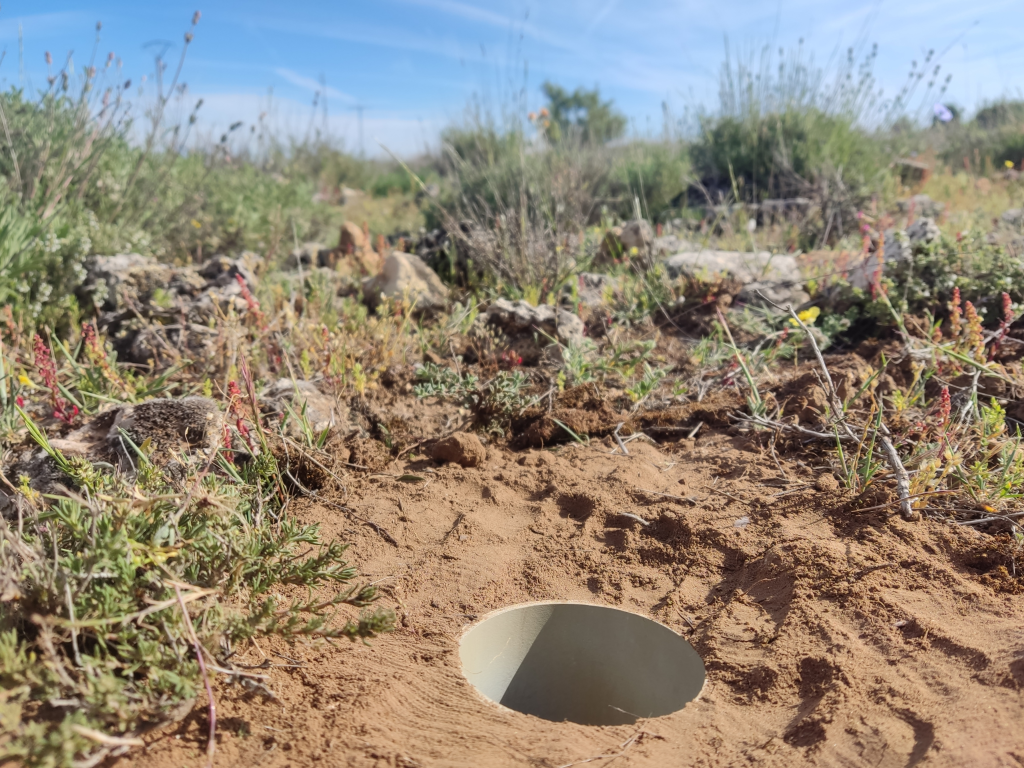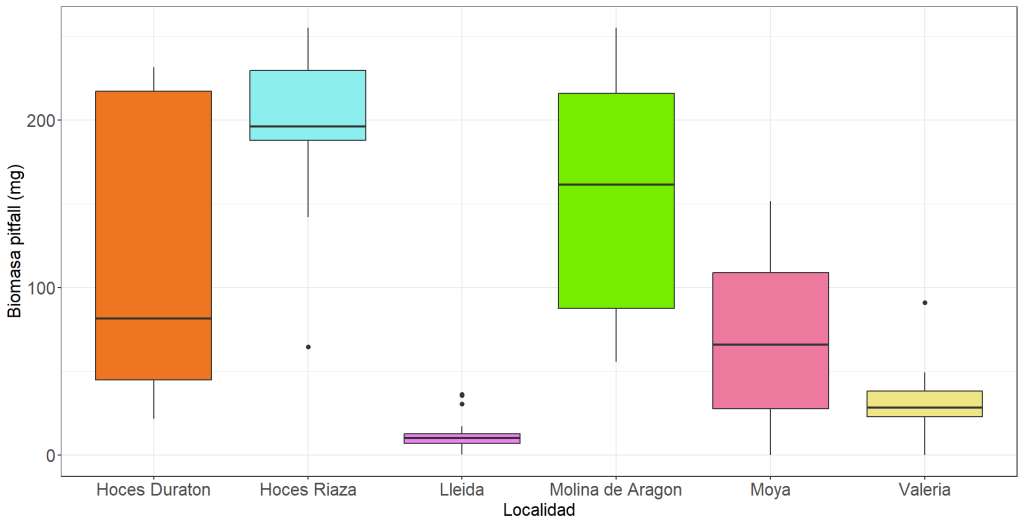
One of the factors determining habitat quality is the presence of arthropods, as they are of vital importance to other groups, among other things. For example, they are the food source for many insectivorous birds, such as the endangered Dupont’s lark (Chersophilus duponti).
To determine the quality of the habitats where the LIFE Connect Ricotí project works, and their suitability for the Dupont’s lark and other insectivorous birds, we conducted sampling in the spring of 2022 to measure the biomass (abundance of arthropods) and composition (variety) of the epigeal arthropod community, which are those that inhabit the soil surface.
These samples were taken using a BACI design (Before-After-Control-Impact study), to understand the effect of the steppe habitat restoration measures applied within the project’s framework. The data were collected in our study areas: Hoces de Riaza and Duratón (Segovia); Páramos de Molina de Aragón (Guadalajara) and the towns of Valeria, Moya, and Pedro Izquierdo (Cuenca) and Secans de Mas de Melons-Alfés (Lleida).

The 2022 samples correspond to the Before Impact phase (habitat restoration), as restoration work is carried out during the autumn-winter of 2023. These baseline data are of great value as they provide information on the state of the ecosystem before restoration, allowing us to observe the changes that occur afterward.
Preliminary exploratory analyses showed how arthropod biomass values varied greatly between areas. The highest values were obtained in Hoces de Riaza and Hoces de Duratón, while the lowest values were found in Lleida and Valeria, areas with a virtually extinct population of Dupont’s lark (Figure 1).


